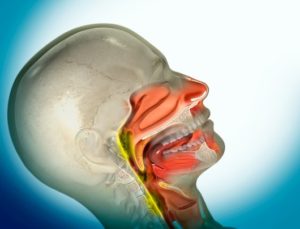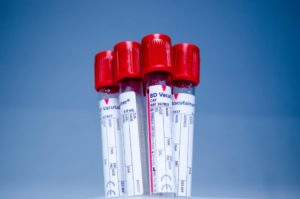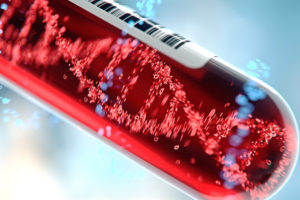Head and Neck Cancer Plasma-Serum Samples
Bay Biosciences provides high-quality, fresh frozen biopsy tissue samples. FFPE tissue blocks with matched fresh frozen sera (serum), plasma, and peripheral blood mononuclear cells (PBMC) bio-fluids from patients diagnosed with head and neck cancer.
The sera (serum), plasma and PBMC biofluid specimens are processed from head and neck cancer patient’s peripheral whole-blood using customized collection and processing protocols.
Fresh frozen tissue and matched biofluid samples are collected from unique patients diagnosed with head and neck cancer.
Samples are provided to a valued pharmaceutical customer for research, diagnostics, discovery and drug development.

Head and Neck Cancer Overview
Head and neck cancer are cancers which can develop in any part of the head and neck area. These are different malignant tumors that develop in or around the throat, larynx, nose, sinuses, and mouth.
Most head and neck cancers are squamous cell carcinomas. Cancers of the head and neck are identified by the area in which they begin, for example the oral cavity, salivary glands, paranasal sinuses and nasal cavity, pharynx, larynx and lymph nodes.
Main causes of head and neck cancers include tobacco (smoked or chewed), and alcohol consumption.
Other risk factors are sun exposure, human papillomavirus (HPV) infection, radiation to the head and neck, Asian ancestry, Epstein-Barr virus infection.
Exposure to wood dust or airborne asbestos, consumption of certain preservatives or salted foods, poor oral hygiene, and Plummer-Vinson (also called Paterson-Kelly) syndrome.
According to the American Cancer Society head and neck cancer accounts for about 4% of all cancers in the United States. This year, an estimated over 66,000 patients (48,740 men and 17,890 women) will develop head and neck cancer.
As per ACS estimates, 14,620 deaths (10,640 men and 3,980 women) will happen from head and neck cancer this year.
Common symptoms of several head and neck cancer sites include a lump or sore that does not heal, a sore throat that does not go away, difficulty swallowing, and a change or hoarseness in the voice. Symptoms may differ according to the part of the head or neck that is cancerous.
Types of Head and Neck Cancer
Following are 5 main types of head and neck cancer, each named according to the part of the body where they develop:
Larynx: The larynx, also called the voice box, is a short passageway formed by cartilage just below the pharynx in the neck. The larynx contains the vocal cords. It also has a small piece of tissue, called the epiglottis, which moves to cover the larynx to prevent food from entering the air passages.
Oral Cavity: Includes the lips, the front two-thirds of the tongue, the gums, the lining inside the cheeks and lips, the floor (bottom) of the mouth under the tongue, the hard palate (bony top of the mouth), and the small area of the gum behind the wisdom teeth.
Paranasal Sinuses and Nasal Cavity: The paranasal sinuses are small hollow spaces in the bones of the head surrounding the nose. The nasal cavity is the hollow space inside the nose.
Pharynx: The pharynx (throat) is a hollow tube about 5 inches long that starts behind the nose and leads to the esophagus. It has three parts, the nasopharynx (the upper part of the pharynx, behind the nose), the oropharynx (the middle part of the pharynx, including the soft palate [the back of the mouth], the base of the tongue, and the tonsils), the hypopharynx (the lower part of the pharynx).
Salivary glands: The major salivary glands are in the floor of the mouth and near the jawbone. The salivary glands produce saliva.

Causes of Head and Neck Cancer
Alcohol and tobacco use, including smokeless tobacco, chewing tobacco or snuff are the most important risk factors for head and neck cancers, especially cancers of the oral cavity, oropharynx, hypopharynx, and larynx.
At least 75% of head and neck cancers are caused by tobacco and alcohol use. People who use both tobacco and alcohol are at greater risk of developing these cancers than people who use either tobacco or alcohol alone. Tobacco and alcohol use are not risk factors for salivary gland cancers.
Infection with cancer-causing types of human papillomavirus (HPV), especially HPV type 16, is a risk factor for some types of head and neck cancers, particularly oropharyngeal cancers that involve the tonsils or the base of the tongue.
In the United States, the incidence of oropharyngeal cancers caused by (HPV) infection is increasing, while the incidence of oropharyngeal cancers related to other causes is falling.
Following are some of the other risk factors for cancers of the head and neck:
Paan (betel quid): Immigrants from Southeast Asia who use paan (betel quid) in the mouth should be aware that this habit has been strongly associated with an increased risk of oral cancer.
Preserved or salted foods: Consumption of certain preserved or salted foods during childhood is a risk factor for nasopharyngeal cancer.
Oral Health: Poor oral hygiene and missing teeth may be weak risk factors for cancers of the oral cavity. Use of mouthwash that has a high alcohol content is a possible, but not proven, risk factor for cancers of the oral cavity.
Occupational Exposure: Occupational exposure to wood dust is a risk factor for nasopharyngeal cancer. Certain industrial exposures, including exposures to asbestos and synthetic fibers, have been associated with cancer of the larynx, but the increase in risk remains controversial.
People working in certain jobs in the construction, metal, textile, ceramic, logging, and food industries may have an increased risk of cancer of the larynx.
Industrial exposure to wood or nickel dust or formaldehyde is a risk factor for cancers of the paranasal sinuses and nasal cavity.
Radiation exposure: Radiation to the head and neck, for noncancerous conditions or cancer, is a risk factor for cancer of the salivary glands.
Epstein-Barr virus infection: Infection with the Epstein-Barr virus is a risk factor for nasopharyngeal cancer and cancer of the salivary glands.
Ancestry: Asian ancestry, particularly Chinese ancestry, is a risk factor for nasopharyngeal cancer.
Signs and Symptoms of Head and Neck Cancers
A symptom is something that only the person experiencing it can identify and describe, such as:
A sign is something that other people can identify and measure, such as:
- Fever
- Rash
- An Elevated Pulse
Together, signs and symptoms can help describe a medical problem. Sometimes, patients with head and neck cancer do not have any of the signs and symptoms described below. Or, the cause of a symptom or sign may be a medical condition that is not cancer.
Patients with head and neck cancer often experience the following symptoms or signs.
- Swelling or a sore that does not heal; this is the most common symptom
- Red or white patch in the mouth
- Lump, bump, or mass in the head or neck area, with or without pain
- Persistent sore throat
- Foul mouth odor not explained by hygiene
- Hoarseness or change in voice
- Nasal obstruction or persistent nasal congestion
- Frequent nose bleeds and/or unusual nasal discharge
- Difficulty breathing
- Double vision
- Numbness or weakness of a body part in the head and neck region
- Pain or difficulty chewing, swallowing, or moving the jaw or tongue
- Jaw pain
- Blood in the saliva or phlegm, which is mucus discharged into the mouth from respiratory passages
- Loosening of teeth
- Dentures that no longer fit
- Unexplained Weight Loss
- Fatigue
- Ear pain or infection
Diagnosis of Head and Neck Cancers
To find the cause of the signs or symptoms of a problem in the head and neck area, a doctor evaluates a patient’s medical history, performs a physical examination, and orders diagnostic tests.
The exams and tests may vary depending on the symptoms. Examination of a sample of tissue (biopsy) under a microscope is always necessary to confirm a diagnosis of cancer.
If the diagnosis is cancer, the doctor will want to learn the stage (or extent) of disease. Staging is a careful attempt to find out whether the cancer has spread (metastasized) and, if so, to which parts of the body.
Staging may involve an examination under anesthesia (in an operating room), x-rays and other imaging procedures, and laboratory tests. Knowing the stage of the disease helps the doctor plan treatment.
Treatment of Head and Neck Cancers
The treatment plan for an individual patient depends on a number of factors, including the exact location of the tumor, the stage of the cancer, and the patient’s age and general health.
Treatment for head and neck cancer can include surgery, radiation therapy, chemotherapy, targeted therapy, or a combination of treatments.
Patients who are diagnosed with HPV-positive oropharyngeal cancer may be treated differently than patients with oropharyngeal cancers that are HPV-negative. Recent research has shown that patients with HPV-positive oropharyngeal tumors have a better prognosis and may do just as well on less intense treatment.
The patient and the doctor should consider treatment options carefully. They should discuss each type of treatment and how it might change the way the patient looks, talks, eats, or breathes.

Bay Biosciences is a global leader in providing researchers with high quality, clinical grade, fully characterized human tissue samples, bio-specimens and human bio-fluid collections.
Samples available are cancer (tumor) tissue, cancer serum, cancer plasma cancer PBMC and human tissue samples from most other therapeutic areas and diseases.
Bay Biosciences maintains and manages its own bio-repository, human tissue bank (biobank) consisting of thousands of diseased samples (specimens) and from normal healthy donors available in all formats and types.
Our biobank procures and stores fully consented, deidentified and institutional review boards (IRB) approved human tissue samples and matched controls.
All our human tissue collections, human specimens and human bio-fluids are provided with detailed samples associated patient’s clinical data.
This critical patient’s clinical data includes information relating to their past and current disease, treatment history, lifestyle choices, biomarkers and genetic information.
Patient’s data is extremely valuable for researchers and is used to help identify new effective treatments (drug discovery & development) in oncology, other therapeutic areas and diseases.
Bay Biosciences banks wide variety of human tissue samples and biological samples including cryogenically preserved at – 80°C.
Including fresh frozen tissue samples, tumor tissue samples, FFPE’s, tissue slides, with matching human bio-fluids, whole blood and blood derived products such as serum, plasma and PBMC’s.
Bay Biosciences is a global leader in collecting and providing human tissue samples according to the researchers specified requirements and customized, tailor-made collection protocols.
Please contact us anytime to discuss your special research projects and customized human tissue sample requirements.
Bay Biosciences provides human tissue samples (human specimens) from diseased and normal healthy donors which includes:
- Peripheral whole-blood,
- Amniotic fluid
- Bronchoalveolar lavage fluid (BAL)
- Sputum
- Pleural effusion
- Cerebrospinal fluid (CSF)
- Serum (sera)
- Plasma
- Peripheral blood mononuclear cells (PBMC’s)
- Saliva
- Buffy coat
- Urine
- Stool samples
- Aqueous humor
- Vitreous humor
- Kidney stones (renal calculi)
- Other bodily fluids from most diseases including cancer.
We can also procure most human bio-specimens and can-do special collections and requests of human samples that are difficult to find. All our human tissue samples are procured through IRB approved clinical protocols and procedures.
In addition to the standard processing protocols Bay Biosciences can also provide human plasma, serum, PBMC bio-fluid samples using custom processing protocols, you can buy donor specific sample collections in higher volumes and specified sample aliquots from us.
Bay Biosciences also provides human samples from normal healthy donors, volunteers, for controls and clinical research, contact us Now.
日本のお客様は、ベイバイオサイエンスジャパンBay Biosciences Japanまたはhttp://baybiosciences-jp.com/contact/までご連絡ください。


